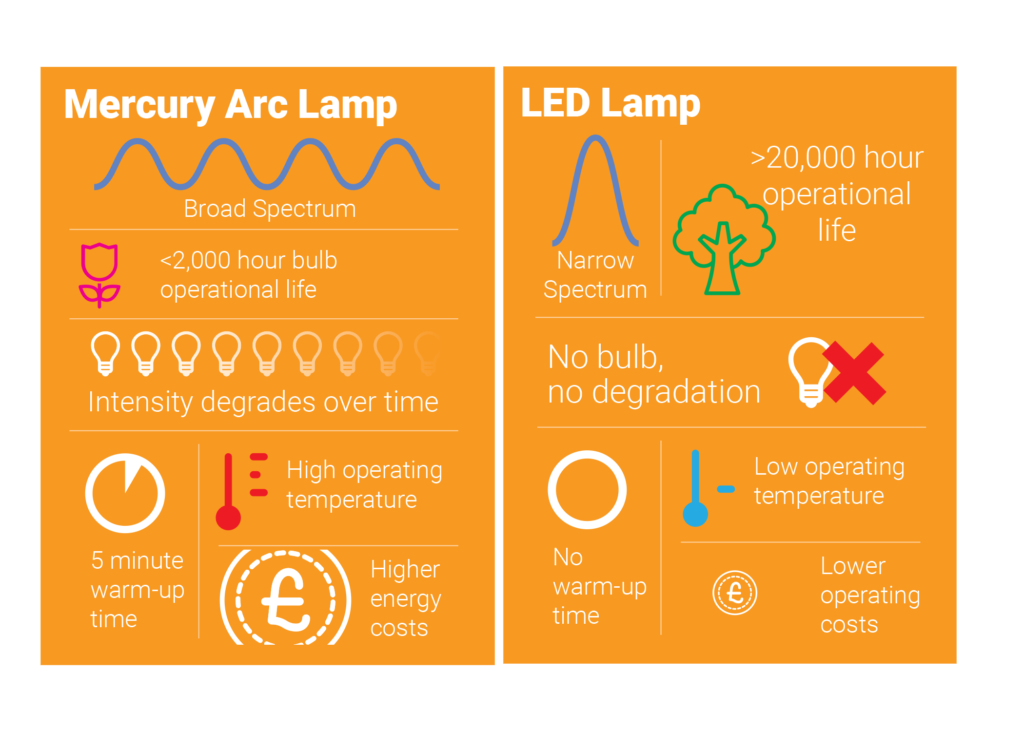Peter Swanson shares three tips for manufacturers operating UV curing processes
Manufacturers often choose light curing materials for assembly applications because of their bonding effectiveness, rapid cure time and process efficiencies.
With so many adhesives and so much equipment on the market, where should manufacturers start?
Since its introduction in the 1960s, UV curing technology has been used in a range of applications, initially with coatings and adhesives, and developing into capabilities such as form-in-place gaskets, temporary masking and potting compounds.

In the case of bonding, every adhesive has its own strengths and limitations, so it may not always be clear which product is suitable for the task at hand.
Selection depends upon the adhesive’s properties, balanced with the application’s requirements and process demands.
With a clear understanding of the UV curing process and the technology available, manufacturers can make informed choices and optimise their process. So, what can manufacturers do to get the most out of their process?
Broad vs narrow spectrum lamps
There are two types of lamp available, broad-spectrum mercury arc UV lamps and LED-based UV curing lamps. LED-based UV lamps will have a quite narrow spectral output based around a single wavelength (eg, 365nm, 385nm).
The traditional broad-spectrum lamp has been the workhorse of the industry for many decades, but does have some shortcomings that manufacturers have to compensate for, such as the operational life of the bulb and intensity that degrades over time.
In contrast, LED UV curing lamps have a consistent output, no bulbs to replace and no warm-up time, amongst other advantages.
For best results, remember that your adhesive must be matched to the output of the curing lamp – not all adhesives will cure optimally with narrow spectrum light from an LED lamp, requiring a broader range of light energy to achieve tack free and best cured properties.
Matching the spectral output of the lamp to the light responsiveness of the adhesive is a crucial step in getting the process right.
What’s the dose?
An advantage of UV is that complete cure is achieved in the bondline in seconds. In order for this to happen, it’s important that the adhesive receives the correct dose of UV light, as well as the right wavelengths.
Most UV curing adhesives start curing once exposed to the correct light, and will stop if the light is removed, so it is important to ensure a full cure is achieved in the exposure process
Manufacturers should test their process to determine the minimum light dose to achieve optimal cure for their application; dose is a combination of light intensity or power, and exposure time.
Once the minimum dose is empirically established, best practice suggests that a safety factor (perhaps 25%) is added to arrive at a robust process.
High performance UV curing adhesives designed for use in industrial applications will require a minimum activation energy level of 50mW/cm2 in order to properly establish cross-linking and effect a good cure.
Higher intensity lights will result in faster cures and process efficiency; more energy will help to give a better cure, improving performance.
Manufacturers can use a radiometer to check the light intensity and your technical contact at your adhesives supplier can recommend a radiometer for your application.
Keep safe
UV light is hazardous. However, protecting operators from the light using integral shielding or by equipment design is straightforward.
For manual, hand-held curing operations, a common sense approach would be to consider how you would look after yourself on a sunny day at the beach – cover up exposed skin and protect eyes.
A good supplier will deliver safety eyewear with each lamp and will help with any further PPE needed, as well as the risk assessment.
Training is recommended for everyone involved in the process. A radiometer can be used to check levels of UV light near the equipment, and to give colleagues better understanding of any hazard.
Peter Swanson is Managing Director at adhesives specialist Intertronics.
 Engineer News Network The ultimate online news and information resource for today’s engineer
Engineer News Network The ultimate online news and information resource for today’s engineer





